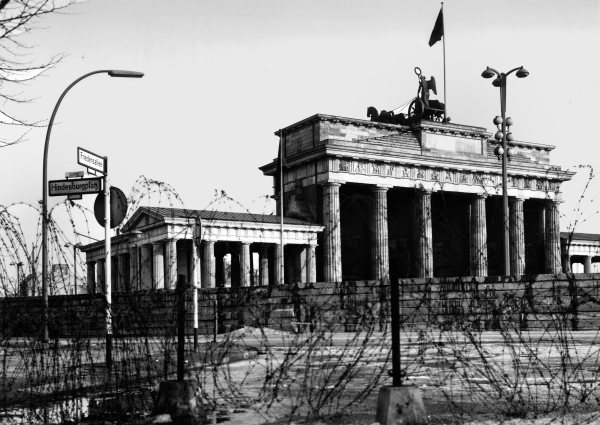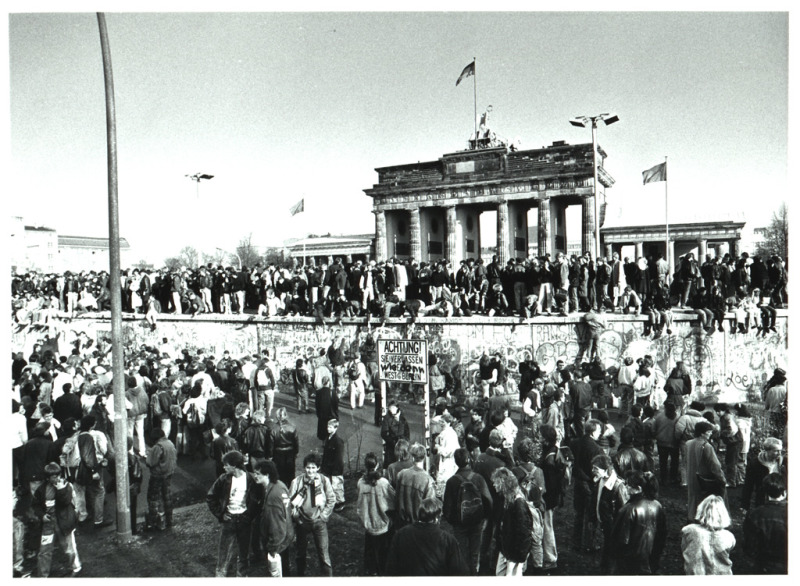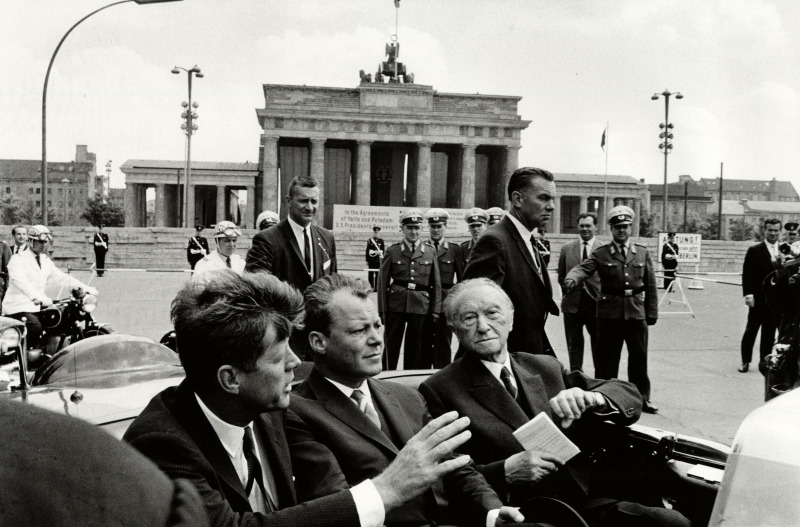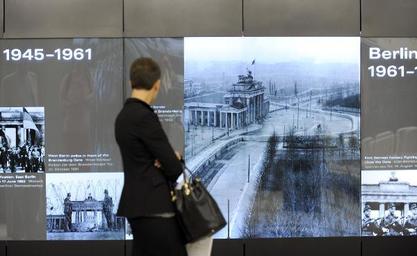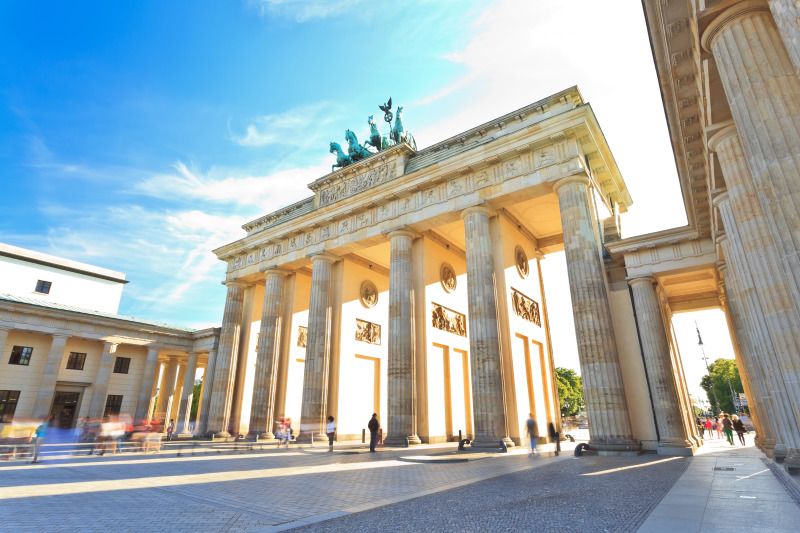Brandenburg Gate, Berlin’s main landmark and former gate to the city, was located right behind the border inside the Soviet sector during the years of division. Pariser Platz was part of the border strip and thus inaccessible to the public.
The Second World War had transformed this center of political and cultural life into an inner-city wasteland. The ruins were cleared away only gradually. The only buildings to survive the bombing were parts of the old Hotel Adlon and the Academy of the Arts, and there were no plans to rebuild here. In the early morning hours of 13 August 1961, the work of sealing off the border began at Brandenburg Gate, too. Water cannons and troop carriers rolled up, and members of workers’ militias took up their positions in front of Berlin’s landmark. East Berliners and GDR citizens were forbidden to cross through into West Berlin. The initial barriers were later reinforced with an outer and inner wall, floodlights, and watchtowers to create an almost impermeable border. The wall in front of Brandenburg Gate was fortified to create an anti-tank barrier that was three meters thick. The border closing and the expansion of the barriers had made Pariser Platz part of the border strip. The empty square allegedly served a representative purpose, but in fact helped to secure the border militarily. Visiting delegations were briefed by officers from the border troops about the measures that were being taken. A wing of Brandenburg Gate housed an information center for these guests, most of whom were from abroad. GDR citizens were not permitted access to the Gate, and most of them were unaware of the information center and its exhibition. Behind a harmless-looking barrier of fences and flowerpots, the so-called “security zone” began. Konrad Adenauer, John F. Kennedy, Mikhail Gorbachev, and Ronald Reagan – state visitors to both West and East Berlin – visited the Berlin Wall at Brandenburg Gate. Visitors to East Berlin, however, were shown what GDR government propaganda termed the “anti-fascist protective wall.” This term, with its implication of a threat originating from the outside, was intended to disguise the true reason for the Wall’s construction: its citizens’ mass exodus to the West had brought the GDR to the brink of economic collapse. In August 1961, party and government heads had wanted to seal off the last escape route via West Berlin. The barriers at the border endured until the winter of 1989, when political changes in the Soviet Union made peaceful revolution in the GDR possible. On the evening of 9 November 1989, a mistake in communication led to a new policy on “permanent exit” to the Federal Republic of Germany being described as a new regulation on visits. Within a short time, crowds of East Berliners started turning up at the crossing points to take advantage of their new right to travel. The crowds were so large that the border guards finally gave up and opened the checkpoints. On December 22, the GDR’s leaders had an additional crossing point set up at Pariser Platz. People were again able to pass freely through Brandenburg Gate. An exhibition about the Wall can be seen at Brandenburg Gate in the U-Bahn station Brandenburger Tor (U 55). It tells the story of this Berlin landmark as a symbol of Germany’s division and the joy of reunification.Pariser Platz and Brandenburg Gate
 Pariser Platz and Brandenburg Gate
Pariser Platz and Brandenburg Gate
 “Der Rufer” (The Crier)
“Der Rufer” (The Crier)
 Exhibition about the Wall at Brandenburg Gate
Exhibition about the Wall at Brandenburg Gate
-
Exhibition about the Wall at Brandenburg Gate Show on map
 Berlin Wall History Mile at Brandenburg Gate
Berlin Wall History Mile at Brandenburg Gate
Contact
Governing Mayor of Berlin – Senate Chancellery –
- Tel.: +49 30 9026-2435
- Fax: +49 30 9026-2285
- E-mail an die Landesredaktion Berlin.de

 German Sign language
German Sign language